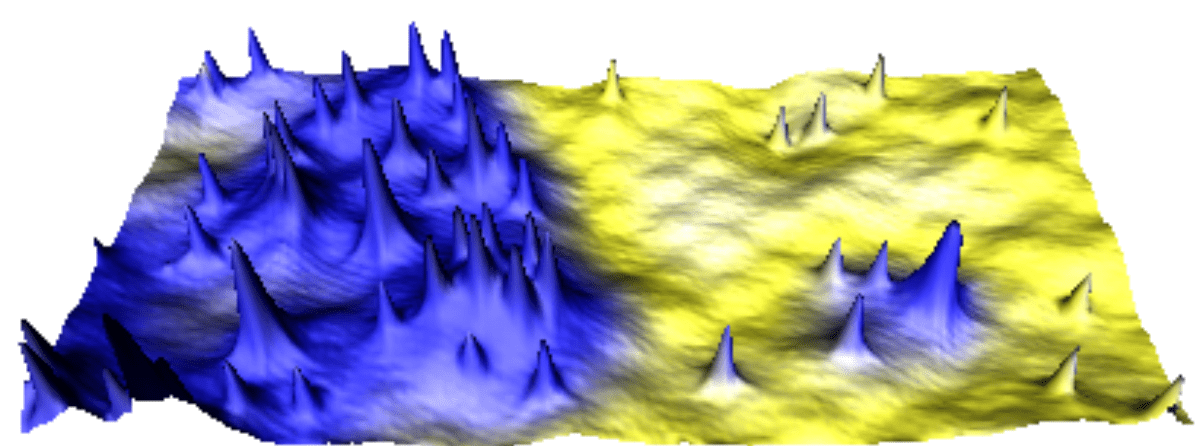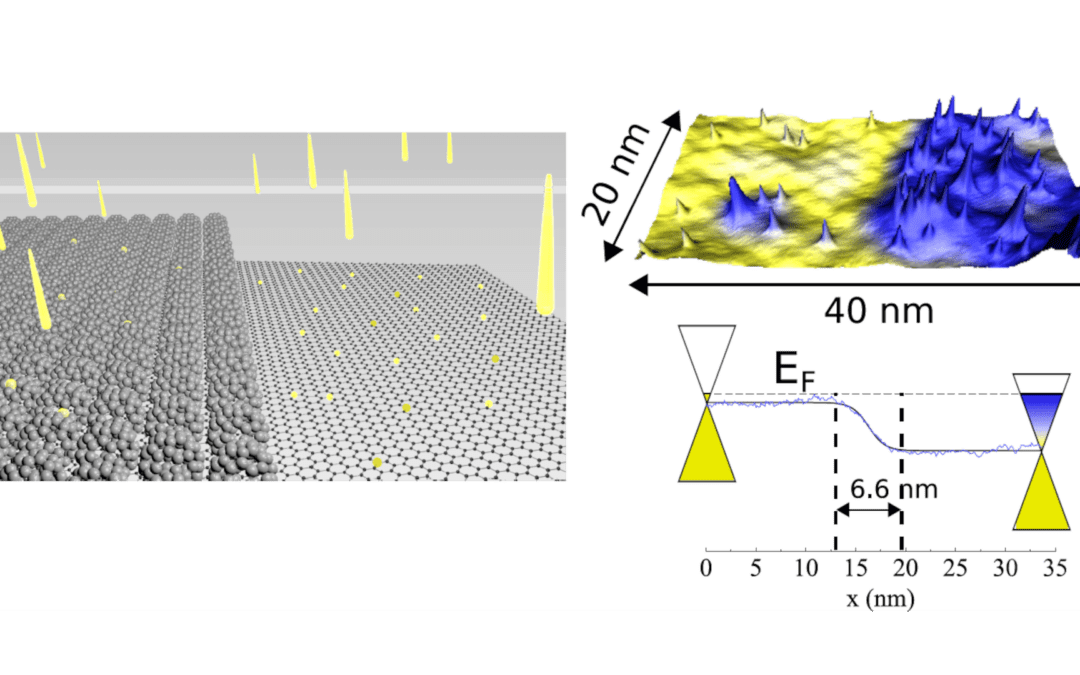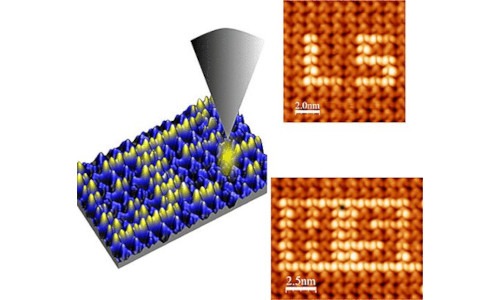Laboratoire: MPQ (Matériaux et Phénomènes Quantiques), Université Paris Cité / CNRS
Adress: Bâtiment Condorcet – 10 Rue A. Domon et L. Duquet – 75013 Paris
Internship/PhD supervisor: Jérôme Lagoute
Tel: 0157276299
e-mail: jerome.lagoute@u-paris.fr

STM image (20 nm x 40 nm) of a nitrogen doped graphene sample color coded with the differential conductance showing a junction between low doped region (yellow) and a high doped region (blue).
The isolation of graphene in 2004 led to the rise of the field of layered two-dimensional (2D) materials that continues to foster tremendous worldwide research activities. In all 2D materials, imperfections are unavoidable. Such imperfections, e.g., vacancies or substitutional/intercalated atoms etc., when combined with the low-dimensionality and enhanced surface/volume ratio, can be engineered to give desirable properties such as reactive catalytic sites, magnetism, or quantum light emission. In this context, defect engineering has recently emerged as a promising strategy to tune the properties of 2D materials including graphene and transition metal dichalcogenides (TMDs) [1].
In this internship, we will use scanning tunneling microscopy (STM) and spectroscopy (STS) operating under ultra-high vacuum and at low temperature (4K) to study the structure and electronic properties of generated defects in graphene at the atomic scale. Our team has recently shown that nitrogen doping in graphene can be controlled at the nanometer scale to realize in-plane pn junctions. STM that can address these junctions at the atomic scale to visualize the potential profile (see Figure) [2]. In this internship we will move further toward defect engineering and combine nitrogen dopants with vacancies. The goal is to reach new functionalities and tune the activity of defects sites from e. g. electro-donor to electro-acceptor. The interaction of the defect sites with molecules will be possibly probed by deposition of organic molecules on top of the functionalized graphene. This work will allow to reach a high degree of control of the chemical activity of graphene that can be useful for diverse applications including catalysis, energy harvesting, sensing. This work can also be extended to other materials such as TMDs. This work may take advantage of several long term collaborations with international partners in Belgium and Taïwan for material synthesis.
[1] F. Joucken, L. Henrard & J. Lagoute. Physical Review Materials 3, 110301 (2019)
[2] M. Bouatou et al., Advanced Functional Materials 32, 2208048 (2022)
À lire aussi

Materials science – When the surface reaches deep inside…
Crystalline surfaces often exhibit reconstructions, usually assumed to affect only a few atomic layers below the surface. A collaborative study (conducted by the Matériaux et Phénomènes Quantiqueslaboratory in Paris, the Institut P’ in Poitiers, and the SixS beamline...

Pint of Science
Several of our researchers are participating in the Pint of Science festival, which is celebrating its 10th anniversary this year. It is one of the largest science festivals in the world. Until May 24th, researchers and the general public come together over a drink in...

Revealing the electronic profile of a p-n junction in doped graphene.
Graphene, composed of a single layer of carbon atoms, possesses unique and promising physical properties in various fields, particularly in electronics. Figure :Diagram (left) representing a cluster of C60 molecules used as a mask to protect graphene during doping by...

Addressing a molecule with a unique spin transition in a 2D lattice
Spin-transition molecules exhibiting bistability are particularly interesting for the development of innovative electronic and spintronic devices, as they exhibit two spin states that can be controlled by external stimuli. Figure:a) Diagram of voltage pulse...
